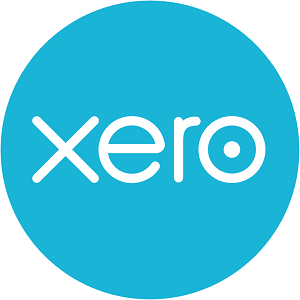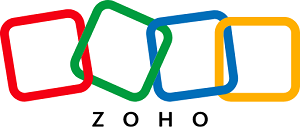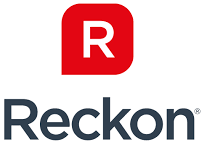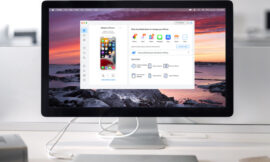Accounting software automates your business’s financial tracking processes, enabling you to send invoices, accept payments, generate financial reports and track your cash flow. Without accounting software, it’s next to impossible to get the financial insights you need to keep your business on track to growth and success.
Xero is the best Australian accounting software tool for most small and medium-sized businesses. Its scalable plans have the features to support sole traders as well as midsize-business owners with more complex finances, and its integration with 1,000+ third-party apps makes it a useful hub for managing your business operations.
Below, we review Xero and five other top Australian accounting solutions. Keep reading to find the right accounting solution for your unique organisation.
Jump to:
Top accounting software for Australian businesses: Feature comparison
| Starting price | Free trial | Built-in payroll | Built-in integrations | Learn more | |
|---|---|---|---|---|---|
| Xero | $32/mo. | 30 days | Yes (Xero Payroll) | 1,000+ | Try Xero |
| QuickBooks | $25/mo. | 30 days | Yes (QuickBooks Payroll) | 500+ | Try QuickBooks |
| Zoho Books | $0/mo. | 14 days | No | Zoho suite of products + Zapier integration | Try Zoho Books |
| Sage | Custom | None listed | No | Sage suite of products + some third-party integrations | Try Sage |
| FreshBooks | $23/mo. | 30 days | No | 100+ | Try FreshBooks |
| Reckon | $12/mo. | 30 days | Yes | Zapier | Try Reckon |
Plan and pricing details up to date as of 12/11/2023. Listed prices are in AUD and include GST.
The top accounting software for Australian businesses
Xero: Best overall Australian accounting software

Xero is easily one of the most popular accounting software programmes for Australian businesses — and it’s not hard to see why. For one thing, the software has an exceptionally low learning curve. Its interface and mobile accounting app alike are easy to set up and understand, which makes Xero a good choice for new business owners unfamiliar with accounting businesses.
For another thing, Xero packs more accounting features into its plans at a better price than the majority of its competitors. Although Xero charges add-on fees for some essential services — most notably for advanced financial reporting — the company still offers the best value for price for Australian businesses in any industry.
To find out if Xero will work for you, read our Xero review.
Pricing
Xero has four accounting plans for small and midsize businesses:
- Xero Starter: $32 per month. Includes payroll for one worker.
- Xero Standard: $65 per month. Includes payroll for up to two workers.
- Xero Premium 5: $85 per month. Includes payroll for up to five workers.
- Xero Ultimate 10: $115 per month. Includes payroll for up to 10 workers.
(All prices are in AUD and include GST.)
Xero’s users can also opt into additional accounting services for an extra fee:
- Employee expense management costs an extra $5 per user per month.
- Project-based time tracking and job costing costs $10 per month for one user and $7 per month for each additional user.
- In-depth analytics cost an additional $10 per month for all plans except for Xero Ultimate, which includes advanced analytics in its base cost.
- Employee time-tracking and rostering costs $40 per month for up to five users, then an extra $8 per additional user per month.
Xero also offers a standalone payroll plan, which includes payroll for between one and four workers and starts at $15 per month.
First-time customers can try Xero free for 30 days before choosing a plan.
Features
- Securely syncs with 21,000 global financial institutions for automatic bank reconciliation and financial tracking.
- Bill and receipt capture via Hubdoc.
- Payment acceptance (credit card, debit card and direct debit payment) via Xero invoices.
- GST transaction management and automatic GST calculation.
- Secure connection to the ATO to lodge your BAS directly from Xero’s software.
- Built-in payroll with Single Touch Payroll and automated superannuation (depending on the plan).
Xero integrates natively with more than 1,000+ third-party apps in categories like financial services, document storage, CRM, bills, expenses and more. Top apps include Weel (corporate card management), Katana (inventory), Billdu (invoicing) and Stripe (payment acceptance).
Pros and cons
| Xero pros | Xero cons |
|---|---|
|
|
QuickBooks Online: Most user-friendly software

If you’re a first-time business owner with limited exposure to finances or accounting, QuickBooks Online could be a good software entrypoint. The software’s self-guided setup is fairly straightforward, but new users can also schedule a free one-on-one onboarding session with a QuickBooks pro. During the meeting, you can ask your most pressing accounting questions and get help customising your new software programme.
See also: Vendor Comparison: Small-Business Financial Accounting Software (TechRepublic Premium)
QuickBooks’ cheapest accounting plan, Simple Start, serves self-employed individuals with basic financial tracking needs. It includes basic cash flow planning and on-the-go features like kilometre tracking and receipt capture. While QuickBooks isn’t as scalable as Xero, its top-tier plan does include basic stock tracking and budget management with access for up to five users.
Your business might eventually outgrow QuickBooks, but its three plans can support your small business on its way toward becoming a midsize company with more complex financial needs.
To find out if QuickBooks will work for you, read our QuickBooks Online review.
Pricing
QuickBooks Online has three accounting plans for small and midsize businesses:
- QuickBooks Online Simple Start: $25 per month (billed monthly) or $270 per year (billed annually).
- QuickBooks Online Essentials: $40 per month (billed monthly) or $430 per year (billed annually).
- QuickBooks Online Plus: $55 per month (billed monthly) or $590 per year (billed annually).
(All prices are in AUD and include GST.)
New customers can get 50% off their plan’s base cost for either three months (with a month-to-month plan) or 12 months (with an annual plan). Alternatively, you can try the software free for 30 days, but you’ll give up your 50% discount if you do so.
Features
- Unlimited customisable invoices with built-in payment acceptance.
- Fully automated income and expense tracking.
- App-based receipt capture, kilometre tracking and invoicing.
- GST tracking and in-software electronic BAS lodgement.
- Optional STP-compliant payroll through Employment Hero.
- Advanced features like free data migration, stock management and project management.
QuickBooks Online syncs with more than 500 third-party apps. Top integrations include PayPal (payment acceptance), Dext (billing and invoicing) and A2X (ecommerce).
Pros and cons
| QuickBooks Online pros | QuickBooks Online cons |
|---|---|
|
|
Zoho Books: Most scalable software

Zoho Books is a highly customisable, fully automated accounting software option. It offers more features with its free plan than many competitors include with their starting paid plans, especially QuickBooks Online.
For instance, with Zoho Books’ free plan (available for businesses with an annual revenue below $50K AUD), users get automated late payment reminders, offline payment acceptance, basic client and item management, multi-lingual invoicing and more.
Although Zoho Books is more comprehensive and scalable than other accounting providers, it’s also less convenient in a few key ways. Most notably, unlike Xero and QuickBooks, Zoho doesn’t offer a standalone Australian payroll plan that syncs with its accounting software. If you want the convenience of adding payroll within the same software suite, Zoho Books isn’t the best accounting option for you.
To find out if Zoho will work for you, read our Zoho Books review.
Pricing
Zoho offers more plans than any other accounting software on our list, which makes it the most scalable provider for growing businesses:
- Free: $0 per month for businesses with an annual revenue below $50K AUD. Includes access for one user.
- Standard: $16.50 per month (billed annually) or $19.80 per month (billed monthly). Includes access for three users.
- Professional: $33 per month (billed annually) or $39.60 per month (billed monthly). Includes access for five users.
- Premium: $44 per month (billed annually) or $59.40 per month (billed monthly). Includes access for 10 users.
- Elite: $181.50 per month (billed annually) or $220 per month (billed monthly). Includes access for 10 users.
- Ultimate: $319 per month (billed annually) or $385 per month (billed monthly). Includes access for 15 users.
(All prices are in AUD and include GST.)
Customers can also add more users to each plan for an extra $3.30 per user per month (billed annually) or $4.40 per user per month (billed monthly). Each plan includes free access for your accountant, including the free plan.
Features
- Customer and supplier contact management.
- Built-in project-based time tracking.
- Customisable GST preferences for each contact.
- Accounts payable and receivable.
- Mobile accounting app access.
- Advanced features include multi-currency support, project-based expenses and invoicing, billing, vendor credits and advanced inventory control.
Zoho Books syncs with a variety of other Zoho products, including Zoho CRM, Zoho Expense, Zoho Inventory and Zoho Analytics. Higher-tier plans also integrate with third-party apps like Zendesk (customer service) and Twilio (customer engagement). You can use Zapier to connect your preferred business apps with Zoho’s accounting software, but its native integrations are fairly limited.
Pros and cons
| Zoho Books pros | Zoho Books cons |
|---|---|
|
|
Sage Intacct: Best for medium-sized businesses

Sage is a UK-based accounting software company that supports businesses across 26 countries, including Australia. Sage offers several products that support medium-sized businesses and enterprises, including a higher-level ERP solution, but its most popular accounting product is probably Sage Intacct.
See also: Best Practices for Choosing the Right Accounting Software (TechRepublic)
Sage Intacct is very user-friendly, and Sage hosts excellent customer education webinars that bring business owners up to speed on accounting software basics. However, Sage’s financial features are complex enough that first-time business owners will have a hard time parsing them.
If you’re a sole trader, it might make more sense to start with Xero, QuickBooks Online or Zoho Books, then level up to Sage Intacct as you expand.
Pricing
Sage Intacct is a complex enough accounting solution that interested businesses must reach out to request a free quote. While Sage doesn’t advertise a free trial, it does host a 20-minute, self-guided demo online so prospective customers can see how the software works.
Features
Sage Intacct seamlessly integrates with other Sage products, including Sage AR Automation and Sage Construction Management. It also integrates with a handful of other third-party apps, such as Corrivo Connect (billing) and Corpay (multicurrency global payment processing). Overall, though, Sage doesn’t have nearly as many built-in integrations as some of its small-business competitors.
Additionally, while Sage doesn’t offer an Australian payroll product, Sage users can download a KeyPay to Sage Intacct Connector that allows KeyPay payroll software users to sync their payroll data with Sage’s general ledger.
Pros and cons
| Sage Intacct pros | Sage Intacct cons |
|---|---|
|
|
FreshBooks: Best billing and invoicing software

FreshBooks is a billing and invoicing software program that primarily helps sole traders with service-based businesses get paid on time. Its higher-tier plans add accounting features like bank reconciliation, accountant access and accounts payable that ensure small and midsize businesses can keep their books up to date.
While FreshBooks has fewer accounting features than heftier programmes like Sage Intacct or Xero, it’s a useful, affordable tool for budget-conscious small businesses with just a handful of employees. Plus, it syncs with far more third-party apps than Sage or Zoho Books, which can streamline and simplify business processes for busy business owners who are pressed for time.
To find out if FreshBooks will work for you, read our FreshBooks review.
Pricing
FreshBooks has three plans for small and midsize businesses and one enterprise-level accounting plans:
- FreshBooks Lite: $23 per month. Includes unlimited invoices to five clients.
- FreshBooks Plus: $35 per month. Includes unlimited invoices to 50 clients.
- FreshBooks Premium: $50 per month. Includes unlimited invoices to unlimited clients.
- FreshBooks Select: Custom pricing only. Includes unlimited invoices to unlimited clients.
(All prices are in AUD and include GST.)
FreshBooks runs frequent sales that let new customers lock in a low price. For instance, the company frequently offers its software for 50% to 75% off for three months. Alternatively, you can try the software free for 30 days, or subscribe to a yearly plan to save an additional 10% on each subscription.
Each FreshBook plan includes free access for just one user (except for FreshBooks Select, which includes access for two users). Additional users cost an extra $16 per person per month.
Features
- Unlimited, customisable invoices, quotes and estimates.
- Client self-service portals, client profiles and client account statements.
- Credit card payment acceptance.
- Unlimited time tracking and expense tracking.
- Advanced features include accountant access, accounts payable and client retainer management.
FreshBooks integrates with 100+ third-party apps, including Stripe (payment processing), Acuity (client scheduling) and Square (point-of-sale service). While FreshBooks doesn’t offer a standalone Australian payroll product, it does sync with Employment Hero’s third-party payroll solution.
Pros and cons
| FreshBooks pros | FreshBooks cons |
|---|---|
|
|
Reckon: Most budget-friendly software

If finding budget-friendly accounting software that tackles bookkeeping basics without charging extra fees is your top priority, Reckon is the best software option on our list. Its cheapest accounting plan includes cash flow insights, which most accounting software providers consider an advanced feature limited to higher-tier, higher-expense accounting plans.
However, Reckon’s basic plan lacks essential accounting features like credit card acceptance, invoicing and billing, which means it will only work for the smallest of small businesses. At $20 a month, Reckon’s second-cheapest plan is still less expensive than other providers’ basic plans, but it doesn’t offer as many features as starter plans from Xero, QuickBooks Online or Zoho Books.
Put simply, if you’re looking for a cheap cash-flow tracker, Reckon is a solid pick. If you want heftier accounting features, you’ll need either a pricier, higher-tier Reckon plan or a plan from a small-business accounting competitor.
Pricing
Reckon offers three basic bookkeeping and accounting plans:
- Accounting Essentials: $12 per month.
- Accounting Plus: $20 per month.
- Accounting Premium: $35 per month.
(All prices are in AUD and include GST.)
Features
- GST tracking and reporting for BAS with all three plans.
- 30+ accounting reports with basic plan.
- 24/7 phone-based customer service.
- Budget creation.
- Real-time cash flow tracking.
- Advanced features include unlimited billing and invoicing,
- Optional STP-compliant payroll add-on starting at $12 per month.
Reckon only integrates natively with a handful of third-party apps, such as MMC Receipt (receipt scanning and expense tracking), Cosmic Bills (bill pay automation) and ProSpend (expense and budgeting). Users may be able to integrate other apps through Zapier.
Pros and cons
| Reckon pros | Reckon cons |
|---|---|
|
|
Methodology
To find the best accounting software for Australian businesses, we looked at the most popular Australian accounting companies and evaluated them in the following key areas:
- Price, including the highest and lowest listed prices, cost transparency, discounts, sales and free trials.
- Accounting features, including GST tracking and BAS lodgement, invoicing, billing, bank reconciliation, payment acceptance, reporting and more.
- User friendliness, including app access, software interface, software security and cloud-based vs. desktop-based software.
- Customer service, including modes of customer care (chat, email and phone), hours of availability and additional fees for premium customer service.
- Integrations, including the number of available built-in integrations, quality of third-party apps, payroll software integration, ease of syncing and open APIs for custom integration.
Look at our payroll software methodology piece to learn more about how we find the software we review, what criteria we use to rate software and how much weight we give to each of our evaluative criteria.
How do I choose the best accounting software for Australian businesses for my business?
The best way to find your company’s ideal Australian accounting software is to sign up for a free trial, view a self-guided demo or schedule a custom demo with a customer service representative. While reviews like ours can act as a useful starting place for your own research, there’s no substitute for first-person, hands-on software experience.
We also recommend taking advantage of locked-in discounts and sales as long as you remember to cancel your subscription at the end of the sale if the software isn’t to your liking. Many accounting companies offer free data migration for customers switching from one of their competitors, so don’t shy away from moving on to a different accounting software solution if the first programme you try doesn’t meet your needs.
Frequently asked questions
What is the best accounting software in Australia?
Xero is one of the most popular, most fully featured accounting software in Australia. Its four plans are extremely scalable, its software is very user-friendly for first-time business owners and its mobile apps make it easy to tackle accounting on the go.
If Xero isn’t the best accounting software for your Australian business, QuickBooks Online, Zoho Books and Sage Intacct are other solid options.
Is Xero used in Australia?
Yes, Xero accounting is used by small, midsize and large businesses in Australia.
What accounting standard is used in Australia?
The Australian Accounting Standards Board (AASB) is a government agency that establishes and regulates generally accepted Australian Accounting Standards (AAS).
Source of Article



